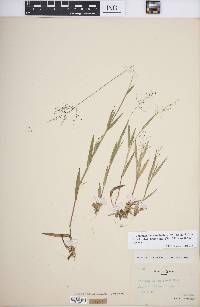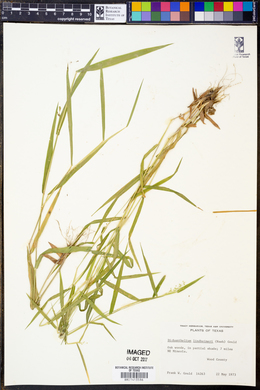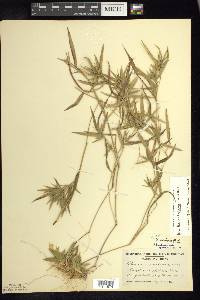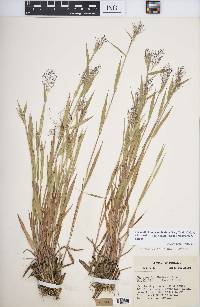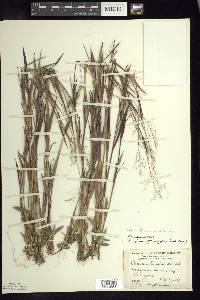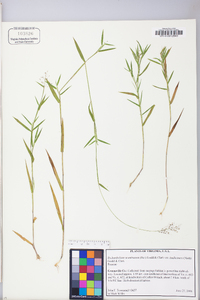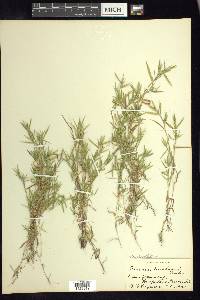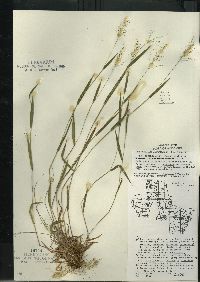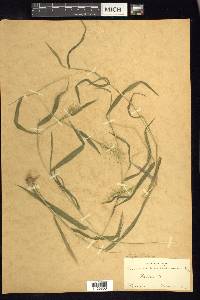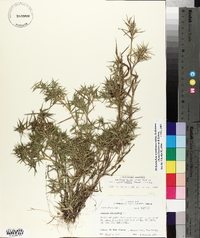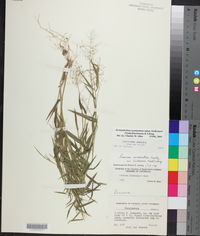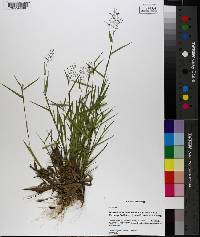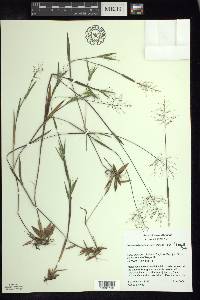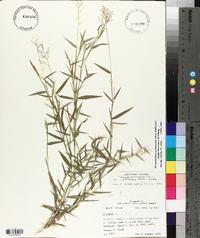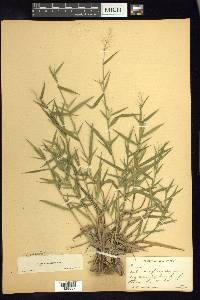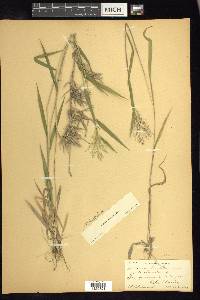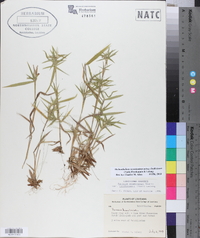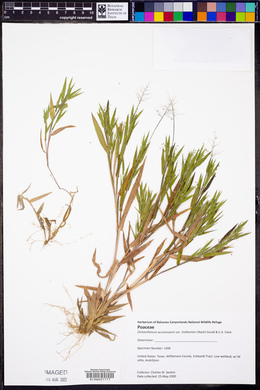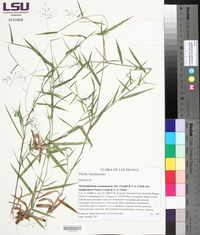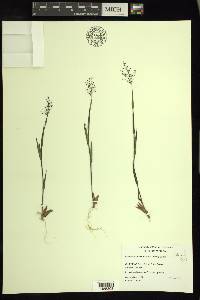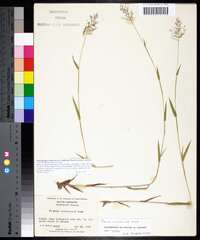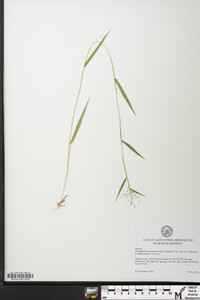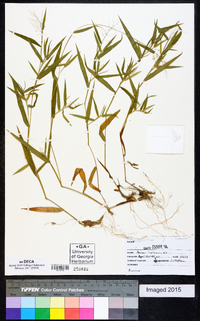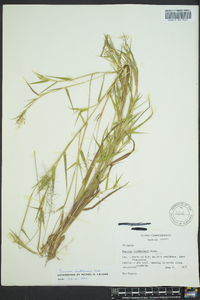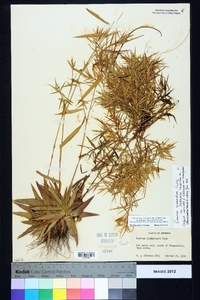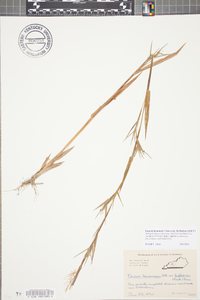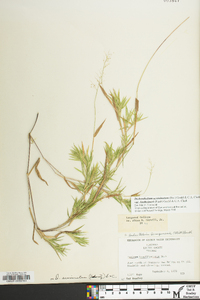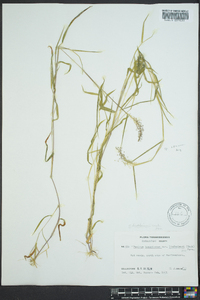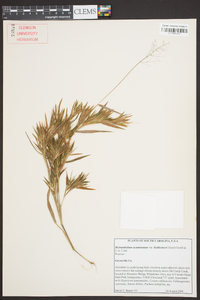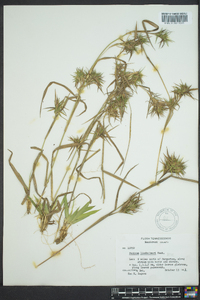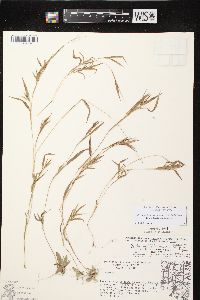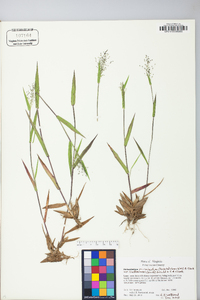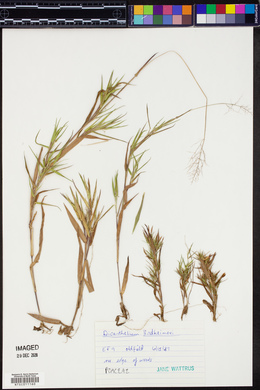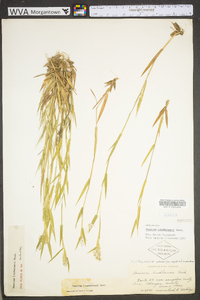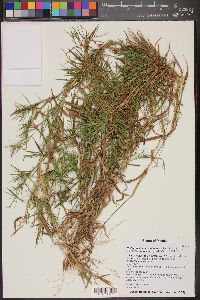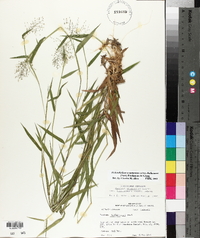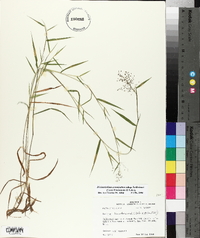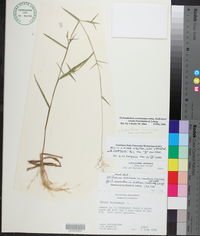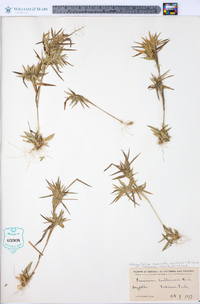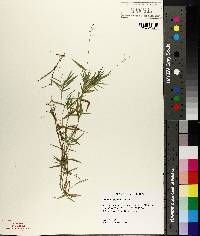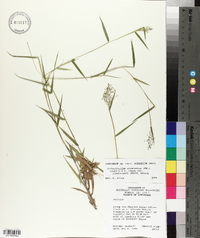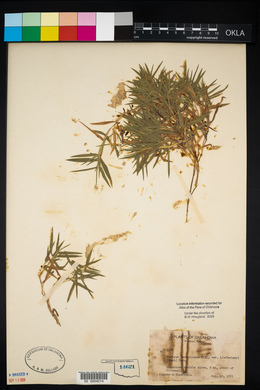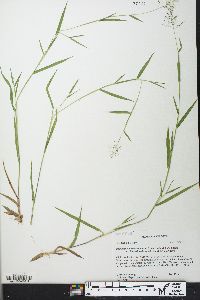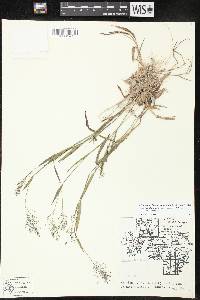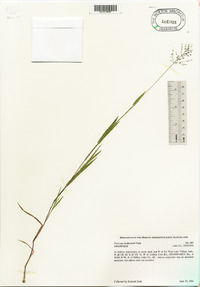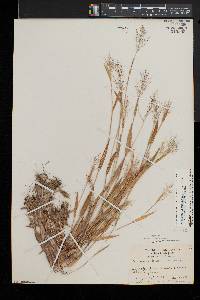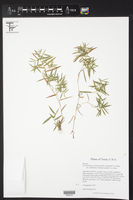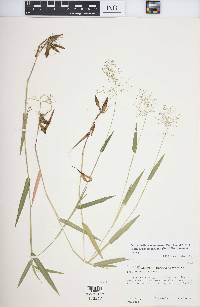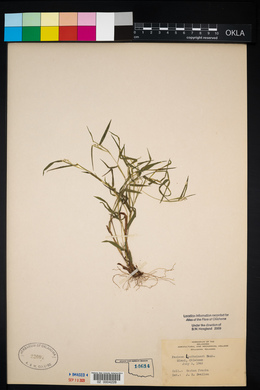
|
|
|
|
Family: Poaceae
Lindheimer's Witch Grass, more...Lindheimer panicgrass
[Dichanthelium acuminatum var. lindheimeri (Nash) Gould & C.A. Clark, moreDichanthelium lanuginosum var. lindheimeri (Nash) Fernald, Dichanthelium lindheimeri (Nash) Gould] |
Culms often yellowish-green, usually glabrous; nodes glabrous; fall phase usually with stiffly spreading culms with dense fascicles of branches with reduced, often involute blades. Cauline sheaths often yellowish-green, usually glabrous or the lowest sheaths sparsely ascending-pubescent; blades 4-9 cm long, 4-8 mm wide, stiffly ascending or spreading, often yellowish-green, glabrous on both surfaces or puberulent abaxially, bases rounded, margins faintly whitish-scabridulous, with conspicuous, long, papillose-based cilia at the base. Primary panicles 3.5-7 cm, open, less than twice as long as wide. Spikelets 1.3-1.6 mm, diverging to ascending, usually obovoid, obtuse. Dichanthelium acuminatum subsp. lindheimeri grows in dry or moist, sandy or clayey, open, often disturbed areas, open woodlands, limestone glades, and roadsides, primarily in the eastern portion of the species range. It intergrades occasionally with the pubescent subsp. fasciculatum and subsp. implicatum. Perennial herb, tufted 15 cm - 1 m tall Inflorescence: a terminal, branched arrangement of spikelets (panicle). Primary panicles atop the culms, open, rather dense, 3.5 - 7 cm long, less than two times as long as wide, well-exserted. Secondary panicles (when present) atop the branches. Fruit: a caryopsis, indehiscent, enclosed within the persistent lemma and palea. Culm: upright or ascending or decumbent, 15 cm - 1 m long, round in cross-section, hollow. Nodes sometimes swollen. Fall phase with rigidly spreading culms that have dense clusters of branches, of which bear reduced leaf blades. Spikelets: diverging to ascending, 1 - 1.5 mm long, reverse egg-shaped with a blunt apex, variously hairy. Basal leaves: in a rosette. Blades shortly egg-shaped to lance-shaped, distinct from stem blades. Stem leaves: four to seven, alternate, two-ranked. Sheaths yellowish green, usually shorter than internodes, sometimes sparsely hairy on the lower sheaths. Ligules and pseudoligules 1 - 5 mm long, composed of hairs. Blades lax or firm, spreading or ascending, distinctly longer and narrower than basal leaves, 4 - 9 cm long, 4 - 8 mm wide, lance-shaped with a rounded base, parallel-veined, sometimes minutely hairy on the lower surface, marginally whitish and minutely rough, with a marginal fringe of long bumpy-based hairs basally. Glumes:: Lower glumes usually one-fourth to one-half as long as spikelets, blunt to pointed at the apex. Upper glumes rounded to pointed at the apex. Lemmas:: Lower lemmas similar to upper glumes. Upper lemmas longitudinally lined, shiny, with rolled-up margins above. Paleas:: Lower paleas shorter than lower lemmas, thin. Upper paleas longitudinally lined. Florets:: Lower florets sterile. Upper florets bisexual, stalkless, 1 - 1.5 mm long, 0.5 - 1 mm wide, ellipsoid with a blunt to pointed apex, plump. Anthers three. Stigmas red. Similar species: No information at this time. Flowering: mid-June to early July Habitat and ecology: Local, often in moist to dry sandy soil. Has also been found in cinders along a railroad. Occurence in the Chicago region: native Etymology: Dichanthelium comes from the Greek words di, meaning twice, and anth, meaning flowering, referring to plants that may have two flowering periods. Acuminatum means "tapering to a long point." Lindheimeri is named after Ferdinand Jacob Lindheimer (1801-1879), the person who discovered this subspecies. Author: The Morton Arboretum From Flora of Indiana (1940) by Charles C. Deam This species is probably somewhat restricted to the lake area and to the hilly areas of the southern part of the state. It is usually found in dry, sandy soil in open woodland and open, dry places, or in moister situations at the bases of sandy slopes, and rarely in dry, sandy, clay soil. ...... Treated as a distinct species, D. lindheimeri, by J. Thomas (2015). Indiana Coefficient of Conservatism: C = 5 Wetland Indicator Status: FAC |


